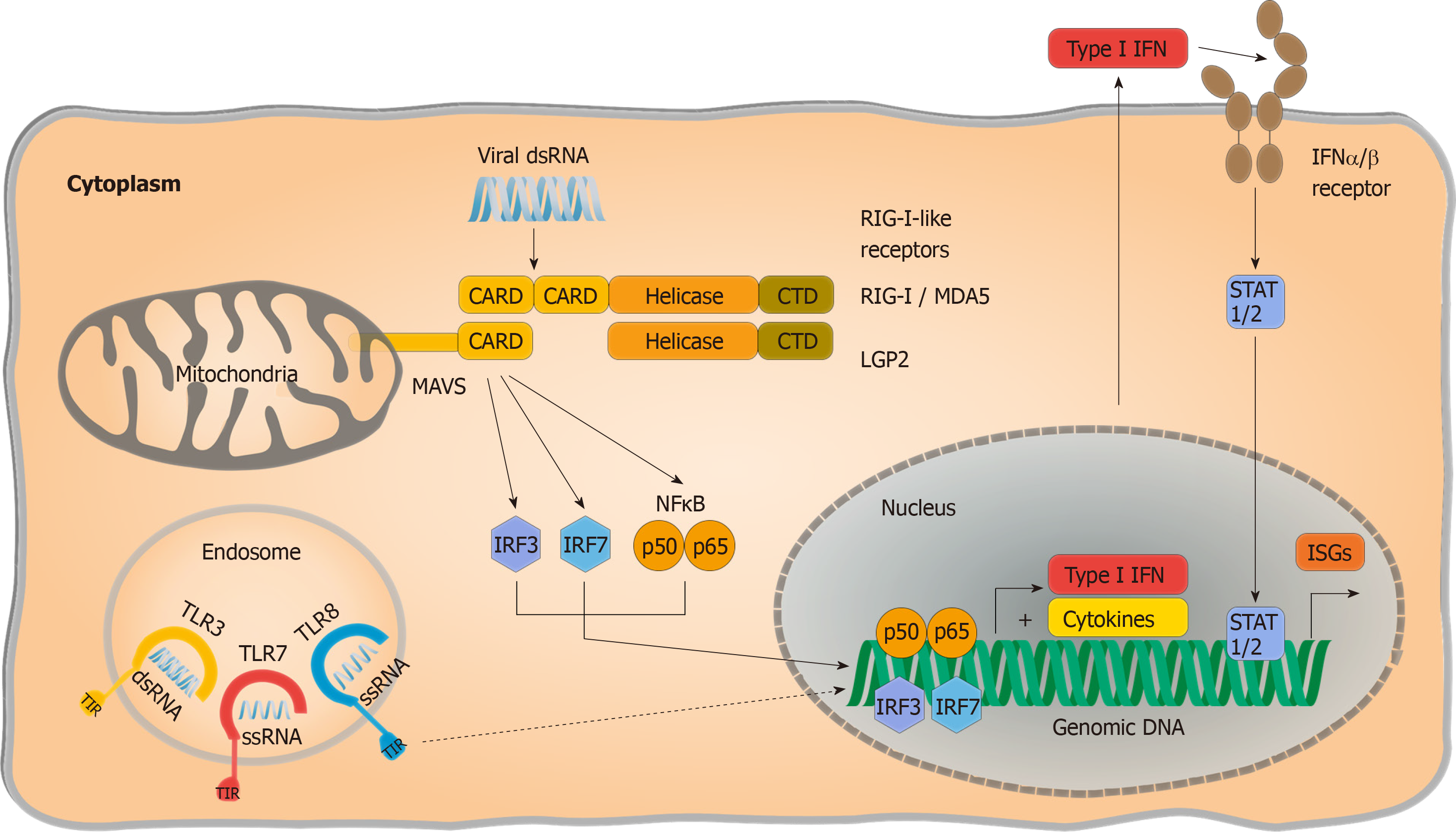Copyright
©The Author(s) 2020.
World J Gastroenterol. Jun 7, 2020; 26(21): 2781-2791
Published online Jun 7, 2020. doi: 10.3748/wjg.v26.i21.2781
Published online Jun 7, 2020. doi: 10.3748/wjg.v26.i21.2781
Figure 1 RNA-sensing by pattern recognition receptors.
Intracellular pathogenic RNA is sensed by endosomal Toll-like receptors (TLRs) and retinoic acid inducible gene I (RIG I) like receptors. TLR3 detects double-stranded RNA (dsRNA), whereas TLR7 and TLR8 detect single-stranded RNA in a sequence-specific manner and signal via their Toll/interleukin-1 receptor homology domains. RIG I and melanoma differentiation antigen 5 bind cytoplasmatic dsRNA structures and activate conformational changes leading to the exposure of Caspase activation and recruitment domains (CARDs). Signalling-deficient laboratory of genetics and physiology 2 only consists of a helicase and a C-terminal domain and functions as an accessory receptor. This enables interaction of CARDs with mitochondrial antiviral signalling protein (MAVS), resulting in subsequent signalling cascades that release nuclear factor “kappa-light-chain-enhancer” of activated B-cells inducing a proinflammatory cytokine response. MAVS also activates interferon regulatory factor 3/7 signalling and signal transducers and activators of transcription 1/2-dependent type I interferon production and antiviral state with upregulation of interferon-stimulated genes in the host cell. TLRs: Toll-like receptors; RIG I: Retinoic acid inducible gene I; LGP2: Laboratory of genetics and physiology 2; ssRNA: Single-stranded RNA; CTD: C-terminal domain; RLRs: RIG I like receptors; NF-κB: Nuclear factor “kappa-light-chain-enhancer” of activated B-cells; MAVS: Mitochondrial antiviral signalling protein; TIR: Toll/interleukin-1 receptor; dsRNA: Double-stranded RNA; MDA5: Melanoma differentiation antigen 5; CARDs: Caspase activation and recruitment domains; IRF: Interferon regulatory factor; STAT1/2: Signal transducers and activators of transcription 1/2; Type I IFN: Type I interferon; ISGs: Interferon-stimulated genes.
- Citation: Jung S, Altstetter SM, Protzer U. Innate immune recognition and modulation in hepatitis D virus infection. World J Gastroenterol 2020; 26(21): 2781-2791
- URL: https://www.wjgnet.com/1007-9327/full/v26/i21/2781.htm
- DOI: https://dx.doi.org/10.3748/wjg.v26.i21.2781









